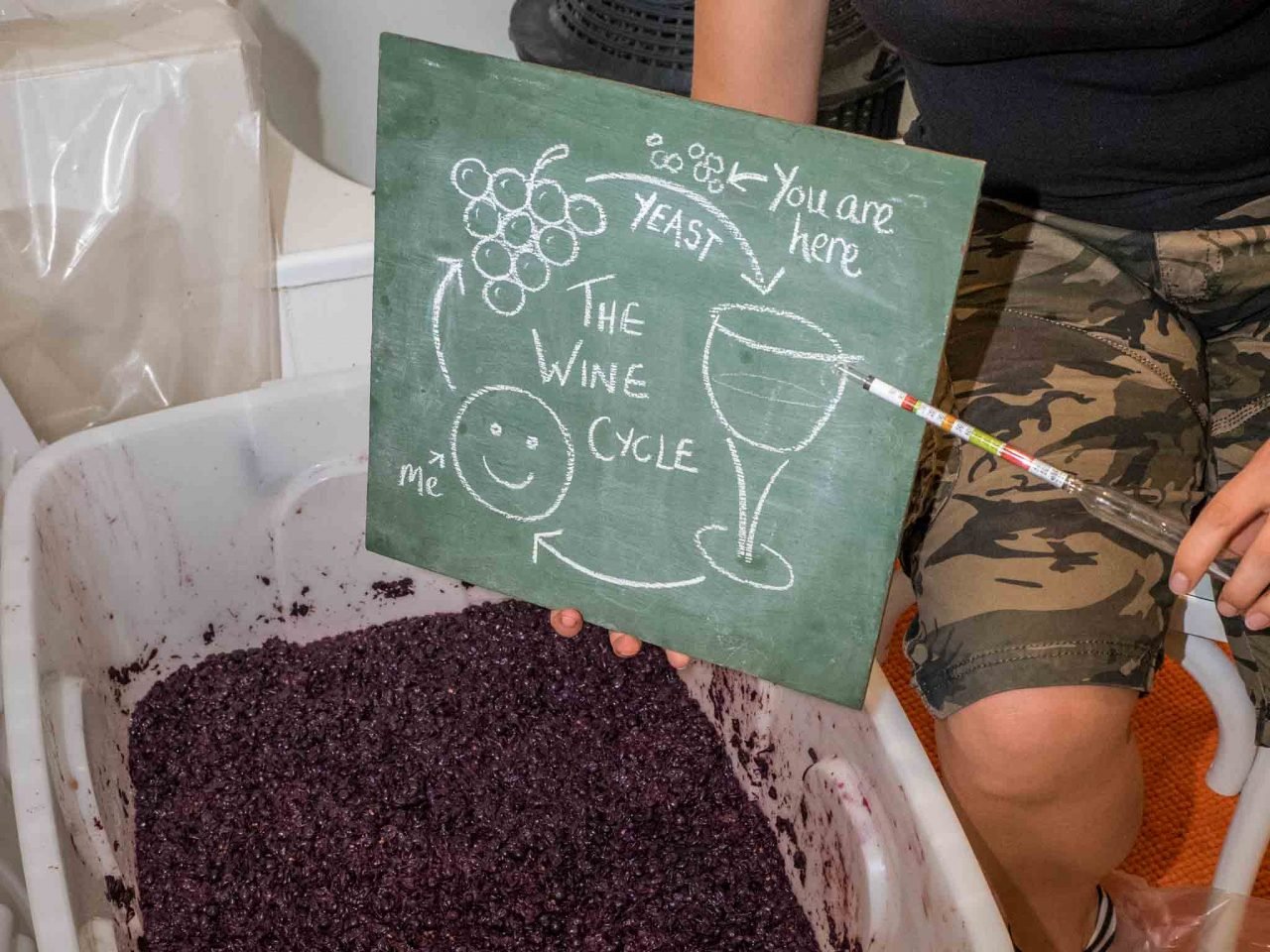Well what a week it has been! More strange and unusual gasses than normal have been permeating the Davison apartment (and the rest of the apartment block too!) Some unknown lifeforms were encountered, some creative differences experienced and finally some seriously vigorous fermentation happening!
Part 2
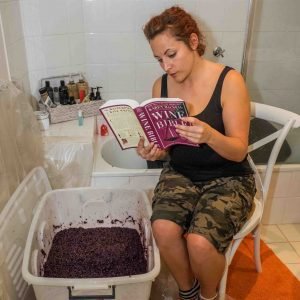
Bed time story
Now you may remember that we were aiming for a ‘wild ferment’. Little did we know that this meant we were in for a wild ride! For the first couple of days, not much changed and we started worrying about all sorts of things. Were the wild yeast even in there? Were they going to be strong enough to fight off the nasty yeast that can turn our lovely grapes in to fine red-wine vinegar? And, at the end of the second day, “ARGH! What is that growing on our grapes?!” We came home to discover an unknown and unwelcome life form had started trying to take over the fermenting tub. Having maybe bitten off a little more than we could chew, we made the decision to throw some PMS into the mix to kill off any nasties.
Science part: Potassium MetabiSulphate is an antioxidant; basically tying up all of the oxygen and killing off anything which needs it to survive.
Fermentation Ahoy!
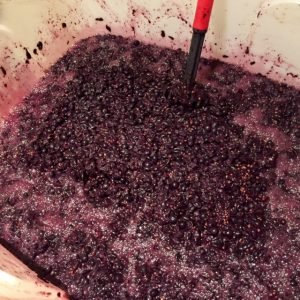
Plunging the cap
Fortunately our lovely natural yeast is a clever microbe. They start working their magic when forced to live without oxygen. Only then do they start to consume the sugars and turn them into alcohol. And didn’t they just do that! Fermenty smells a plenty the following morning, and a thick ‘cap’ on the top of the must. The Cap is formed when fermentation happens and forces all of the grape skins and pulp to the surface. It needs to be ‘plunged down’ (we used a potato masher) twice a day to ensure that the juice has lots of contact with the skin, as that is where much of the flavour and tannins come from in red wine.
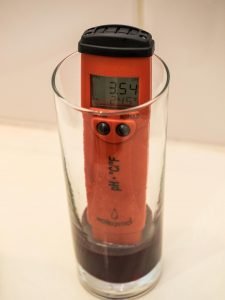
Measuring the pH
We’ve been taking measurements every day for a week now to keep an eye on how the fermentation is going:
- A reduction in Baumé from 14.5 to around 2.5 means that the sugars are being turned to alcohol.
- The pH (acidity) has stabilised after being a little erratic at the start of the week.
- The temperature of the must has risen quite a bit due to the heat output of the yeast.
Graph
The wild yeast were doing such a great job of fermenting the grapes that we left them to it for a few days. A precautionary inoculation with cultured yeast was made on Friday night (Day 5) to ensure that the ferment would be complete. Wild yeast tend to die off when the alcohol levels get too high. However, cultured yeast are bred to perform under higher concentrations to make sure that all the sugars are fermented.
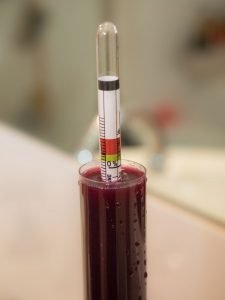
Measuring the sugar level
Now we are down to a Baumé of 2.5 on day six. Therefore, we are using bottles of frozen water to try and cool the must down a bit. The yeast work a bit slower at cooler temperatures which gives the juice more time to absorb flavour from contact with the skins.
Andi is scrubbing the big demijohns at the moment to make sure they’re clean ready to receive the juice. Pressing is likely to happen in the next few days! We’ve just got to find a press…

